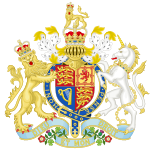- Marriage Act 1836
-
The Act for Marriages in England 1836 6&7WmIV, c85 (17 August 1836) was an act that legalised the concept of civil marriage into England and Wales from 1 January 1837.[1]
Since the Marriage Act 1753, the only legally recognized marriages in Britain (with the exception of Jews and Quakers) were those performed in a parish church by a clergyman of the Church of England. This meant that Roman Catholics and members of other dissenting congregations, as also atheists, Muslims, Hindus or members of any other religious body, had to be married according to (the Anglican) rites and ceremonies which they did not support, and by a priest whom they believed had no authority. If they did not do so, they had no legal rights as married people or as husband and wife. Roman Catholic priests often recommended that their parishioners be married in the Roman Church but then have their marriage legalized in an Anglican parish church. When asked why he recommended this, one priest "declared glomily that almost every day the wife of an Irish labourer was deserted by her husband and could get no redress."[2]
The Marriage Act of 1836 remedied this situation as far as Christians belonging to non-Anglican churches were concerned. The act allowed ministers belonging to other churches to register marriages performed in their churches with the government, thus granting legal status to those marriages.
One of the most vocal opponents of the bill was Henry Phillpotts, Bishop of Exeter. The Times of 13 October 1836 reports that he denounced the bill as being [3] "…a disgrace to British legislation. (It) is pretended to be called for to prevent clandestine marriages, but I think it will greatly facilitate such proceedings. Not solemnized by the church of England, may be celebrated without entering into a consecrated building, may be contracted by anybody, and will be equally valid, whether it takes place in the house of God, or in the house of a registering clerk, one of the lowest functionaries of the state. The parties may take one another for better and for worse, without calling God to witness their plighted troth. No blessing sought; no solemn vows of mutual fidelity; no religious solemnity whatever …"
References
- ^ Parliament of the United Kingdom (1836). Marriages. A bill for Marriages in England. London: The Stationers Office. http://en.wikisource.org/w/index.php?title=1836_%2834%29_Marriages._A_bill_for_Marriages_in_England&action=purge.
- ^ Owen Chadwick, The Victorian Church, Vol. 1, 2 vols. an Ecclesiastical History of England,. New York, Oxford: Oxford University Press, 1966.
- ^ "Triennial Visitation Of The Bishop Of Exeter". The Times (London: The Times): p. 3. 13 October 1836.
United Kingdom legislation Pre-Parliamentary legislation Acts of Parliament by states preceding
the Kingdom of Great BritainActs of the Parliament of England to 1483 · 1485–1601 · 1603–1641 · Interregnum (1642–1660) · 1660–1699 · 1700–1706
Acts of the Parliament of Scotland
Acts of the Parliament of Ireland to 1700 · 1701–1800Acts of Parliament of the
Kingdom of Great Britain1707–1719 · 1720–1739 · 1740–1759 · 1760–1779 · 1780–1800
Acts of Parliament of the United Kingdom of
Great Britain and Ireland and the United
Kingdom of Great Britain and Northern IrelandChurch of England Measures Legislation of devolved institutions Acts of the Scottish Parliament
Acts and Measures of the Welsh Assembly
Acts of the Northern Ireland Assembly / of the Northern Ireland Parliament
Orders in Council for Northern IrelandSecondary legislation Categories:- Family law in the United Kingdom
- United Kingdom Acts of Parliament 1836
Wikimedia Foundation. 2010.

